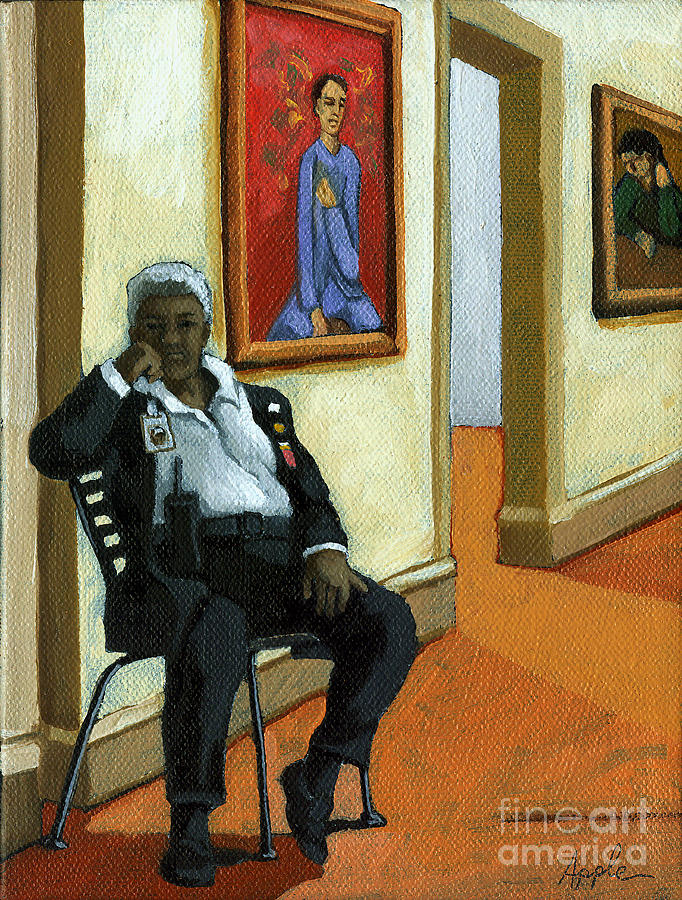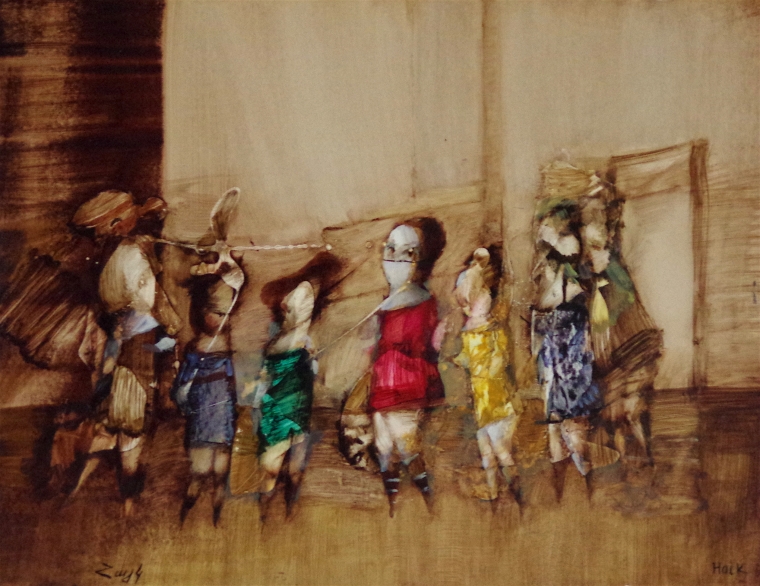The Influence of Figurative Oil Painting on Modern Art and Society
The Influence of Figurative Oil Painting on Modern Art and Society
Blog Article
The Evolution of Metaphorical Oil Paint: Comprehending Its Historical Value and Modern Interpretations
The advancement of figurative oil paint serves as an engaging lens through which to take a look at the interplay in between artistic expression and historic context. Contemporary artists, attracting from this rich heritage, are currently reinterpreting the human number in means that challenge typical narratives.
Beginnings of Metaphorical Oil Painting
The beginnings of figurative oil painting can be mapped back to the early Renaissance in Europe, especially in the 15th century. This duration marked a considerable departure from the stiff kinds and flat representations particular of medieval art. Artists started to discover naturalism, emphasizing the human number and its psychological expression. The development of oil paint enabled for better deepness of color and detail, improving the realistic look and vibrancy of their job.

In this transformative age, numbers were usually depicted within contextually abundant environments, showcasing not only their physical features however also their mental states. Leaders such as Jan van Eyck and Titian utilized the tool's convenience, utilizing layering strategies to accomplish luminance and appearance. This development helped with the representation of detailed textiles and the subtleties of skin tones, adding to the development of portraiture and narrative scenes.
Furthermore, the Renaissance focus on humanism fostered a gratitude for individualism, which subsequently influenced musicians to produce more relatable and vibrant numbers - figurative oil painting. Therefore, figurative oil paint became an effective car for narration and emotional involvement, laying the groundwork for future artistic motions and styles
Secret Historical Motions
Significant historical activities have formed the evolution of metaphorical oil painting, each adding unique approaches and techniques that broadened the tool's possibilities. The Renaissance noted a zero hour, stressing realism and the human kind, with artists like Leonardo da Vinci and Michelangelo pushing the borders of anatomical accuracy and viewpoint. Following this, the Baroque era brought remarkable contrasts of light and darkness, exhibited by Caravaggio, who instilled spiritual themes with intense emotionality.
The 19th century presented Romanticism and Realistic look, where artists such as Delacroix and Courbet challenged timeless ideals, focusing on private expression and day-to-day life. The advent of Impressionism additionally changed the medium by emphasizing the impacts of light and shade, leading to a departure from standard depiction.
In the very early 20th century, movements like Expressionism and Cubism redefined figurative painting through abstraction and the expedition of psychological deepness. Each of these activities not just mirrored the societal changes of their times however likewise prepared for modern analyses. The interaction in between these historic movements has created a rich tapestry of styles and viewpoints, influencing contemporary artists in their quest of catching the human experience on canvas.
Methods and Materials Development

Throughout the Baroque duration, strategies such as chiaroscuro and sfumato emerged, improving the emotional vibration of figurative structures. Artists started to try out lusters and impasto, controling appearance and brightness. By the 19th century, innovations like making use of pre-mixed paints in tubes transformed accessibility, enabling musicians to paint en plein air and record the fleeting results of light.
The 20th century saw the intro of synthetic pigments and mediums, which increased the palette and modified the consistency of oil paints. The exploration of brand-new application strategies, such as palette knives and brushes of differing stiffness, additional varied artistic expression. Collectively, these innovations reflect the developing partnership in between materials, methods, and the creative vision integral in figurative oil painting.

Contemporary Analyses
Contemporary analyses of metaphorical oil paint mirror a vibrant discussion in between practice and technology, where musicians test developed standards and discover varied styles. This development materializes in different methods, as contemporary artists blend classical website link strategies with modern-day principles, usually resolving social, political, and individual stories.
Lots of professionals draw inspiration from historical jobs, yet they instill their pieces with contemporary perspectives, click to find out more making use of the human kind as an automobile for commentary on society, identification, and gender. Artists increasingly trying out abstraction, distortion, and multimedias, which permits for a wider interpretation of the number and its context.
Additionally, the use of vivid shade combinations and unconventional make-ups commonly serves to interfere with standard seeing experiences, prompting important engagement from target markets. This shift in emphasis prolongs past appearances; it shows an expanding understanding of the intricacies of human experience in an interconnected world.
As metaphorical oil painting remains to develop, it continues to be an important tool for checking out the subtleties of contemporary life, personifying both a respect for heritage and a dedication to dynamic thought. The outcome is a rich tapestry of expression that reverberates with the intricacies of the modern human problem.
Influence On Modern Art
The effect of metaphorical oil paint on modern art is profound, as it has actually consistently inspired a myriad of artistic motions and techniques throughout the 21st and 20th centuries. From Expressionism to Surrealism and beyond, the exploration of the human figure has continued to be a central theme, permitting musicians to convey complicated feelings and stories. This emphasis on figurative depiction has actually led to a re-examination of standard strategies, causing innovative approaches that blend realism with abstraction.
Furthermore, contemporary artists have accepted metaphorical oil painting as a way to attend to political and social concerns, making use of the tool to test perceptions of society, gender, and identity. The revival of rate of interest in figurative work in recent years mirrors a wishing for link in a significantly electronic world, where human experience and emotion are paramount.
Additionally, the discussion in between figurative oil painting and modern art is noticeable in the jobs of musicians such as Kehinde Wiley and Jenny Saville, who attract on historic recommendations while infusing their items with modern significance. Ultimately, metaphorical oil paint continues to shape and redefine modern-day creative expression, highlighting its enduring value in the art world.
Conclusion
The advancement of metaphorical oil painting emphasizes its historical significance and flexibility across various imaginative motions. From the naturalism of the Renaissance to the stirring expressions of the Baroque and the ingenious approaches of modernity, this tool has continually changed. Contemporary interpretations show unique compositions and vivid colors, cultivating important engagement with political and social themes. Inevitably, figurative oil paint remains a crucial medium for checking out the human experience, reverberating exceptionally in today's electronic landscape.
The development of metaphorical oil painting serves as an engaging lens via which to analyze the interaction in between artistic expression and historic context.Substantial historical motions have actually formed the evolution of metaphorical oil paint, each contributing distinct approaches and strategies that additional resources increased the medium's opportunities.As historic movements shaped the trajectory of metaphorical oil paint, the strategies and products used by musicians have actually also gone through substantial makeovers. figurative oil painting.The impact of figurative oil painting on modern-day art is profound, as it has continuously motivated a myriad of imaginative activities and techniques throughout the 21st and 20th centuries.The advancement of metaphorical oil paint highlights its historical relevance and versatility across different imaginative movements
Report this page